Fallen Eagles Scenario Three
Fallen Eagles is a new title from Hexasim. One hour turns, 100 men per strength point, 200 m hex Napoleonic battle system. The first title deals with Waterloo.
After 3 and a 1/2 turns of a 4 turn scenario a few things become clear very rapidly as to who would win so we called it late turn three.
This is a system designed for players.
But is FE going to give us that elusive Napoleonic theme and flavour previously discussed in the provided link?
Most Nappy games at the tactical level either stray to the ‘become a Brigade & Regimental commander’ for EVERY Regiment and make sure your men are facing the right way, and manage where the cannonballs land in 20 minute increments; or they abstract out too much detail and the game becomes a soulless mess where we shuffle counters around and cherry pick odds.
Fallen Eagles (FE) lands somewhere between those two aspects.
Lets step aside from the muted colors, understated elegance of the maps, smart counters and rule book layout and lets just talk mechanics and period flavour. Otherwise we will for sure be lost in a moment as the clarity of purpose and ease of use shines thru in every aspect….
Well hell now I started, let me finish with aesthetics.
One big beef I have with many ‘detailed’ Napoleonic systems is the overt expectation that you are required to know pretty much every unit and which corps it belonged to, and know your detailed history in order to play. In FE the choice to color code by Nationality and formation really is a boon to new players and older ones alike as sorting is not some silly two hour long exercise. From punch to play was 10 minutes using the setup charts for Scenario three.
TEN minutes. Stunning!
Setup charts, abbreviated rules, clear combat tables, nice TEC, …..OMG talk about making it painless. Thank you. The rules are brief, clear and concise.
I know some game designer gurus who could take a leaf out of how these rules are presented.
Back to mechanics.
If you are looking for the management of Charges, Counter Charges, Squares and such. STOP. Read no further, move along. This game is not for you. Are these things in the game? Yes. Are you in total control of all of them? Not always.
There are no square counters, no zones cones for charges. This is all factored into DRMS and the orders for the turn in question. Nor is there facing! The designer assumes your Regimental’s know which way to face the troops!
Think about it. Really. Why do we mess with facing in this era at this scale? As Overall Commander, that is not your job.
Your job is invoking Mayhem, Outmaneuver and Slaughter.
Command
One aspect that I have loved about pre WWI titles is the command and control challenges. Many games offer up multiple means of allowing you to manage that, from NBS, written orders, to command range chains to COA’s Le Batt with basically none.
Here again, the sanctity of convention is thrown away. Planning maps divide the game area into zones each with a specific geographic location as its ‘central point’ or focus. Forces are ordered to them or to defend them (defending here provides the Square bonus I mentioned earlier).
Your forces Corps Commander must roll under their initiative to move, and alternate individual orders can be given against the prevailing general order by rolling successfully against the morale level of the unit. Plus a unit can always move one hex.
Otherwise you move to your goal, fighting and inflicting mayhem along the way. For instance Hougomont is an area that can be designated as an objective. A Corps that is ordered to move the area, must move in the direction of the objective, unless trying to execute an individual order.
In a given turn each Corps may only activate twice in a turn, you may pass, but when you do rolls occur to see if the turn ‘ends’! This forces the overall commander to choose wisely as to who moves, and when they move, with the pressure of the turn potentially ending at almost ‘any moment’ after several activations.
Excellent, simple, effective. You have enough free will within the general confines, but your Gods Eye response and view are mitigated by the order system.
Move & Melee
Movement is straight forward, your Arty fires, your men shoot musket volleys then leave the hex…but pay a penalty if they do move if they fired. Firing imposes a 3 MP cost on the hex for the duration of the activation and you track that by popping an info marker down.
The cool thing here is once again you are making decisions based on military practices of the times; using ranged arty attempts to soften up the enemy, your men close to volley range and then you melee.
In Melee the enemy conduct defensive fire, in which your forces may make ‘quality check’ or morale checks to see if they take losses or retreat. Then melee occurs. Tally factors, identify the ratio and other DRMS and roll on a 2d6 table for the result +/- drms. Here high morale units are really going to shine, the bring beneficial drms to the fight.
Once resolved , lead units stay in place, but others may advance into the vacated space. The spread of results is interesting, both sides may suffer or if the roll is high enough or low enough just one side takes checks and damage.
Then of course a rally phase. Where you…rally…
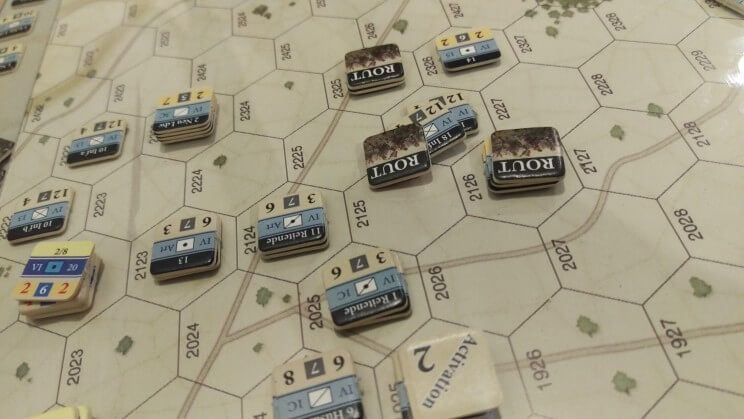
It really is that simple, but nothing works right if you dont apply some common sense linear fighting tactics. Racing off a 10 rated guard units to gobble up weaker enemies is not going to work, as arty and the threat of being surrounded will force good discipline or destruction.
Downsides
While the game does cater to concepts pertaining to flanking with DRM bonus’s and force mix penalties, the lack of Cavalry charge and square forming decisions is likely going to rub Grognards the wrong way. They don’t want a DRM I am guessing, they want to see a Square counter placed, a morale check to do it, and a corresponding check of the cavalry attacking said square.
Similarly the direct fire may feel ‘too simple’ as Infantry don’t count up factors, you fire, and based on terrain and a minimum # of SP you adjust the die roll. You have 5 chances in 12 of causing a loss or QFT (morale check).
You will note from the descriptions about Melee there was no mention of Attack Columns vs Line etc. Once again it is assumed that forces at this particular battle used the best formation in the situation at hand. Remember this is one activation in an hour, so 30 minutes ought to be time enough to move from line to column etc.
Early thoughts:
This is indeed almost a perfect medium weight hex and counter Napoleonic system. Much of the flavour without ANY tragic overhead, a smart orders system that is EASY, and finally a no nonsense ranged combat and melee system.
Map, counters and rules bring the essence of Napoleonic tactical warfare to the fore.
I’m looking forward to the campaign game where tactical cards come into play. These clever cards used in the campaign for bonus’s that trade between players and need to be managed carefully for just the right timing of use or to deny their use.
Looking forward to playing the whole thing very soon!
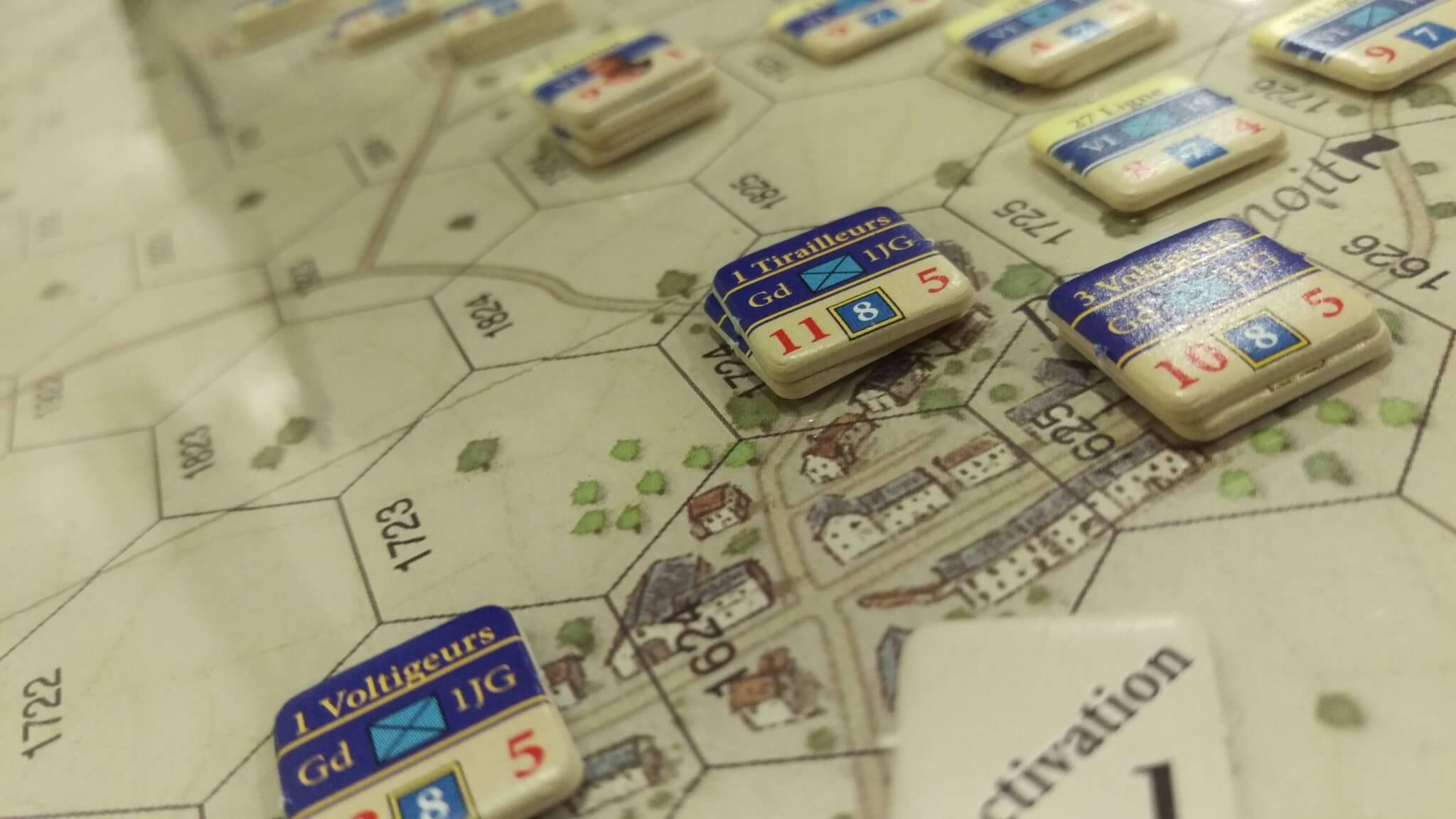
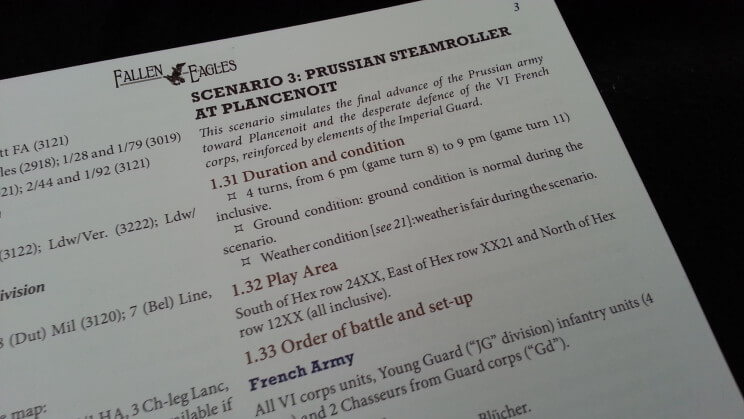
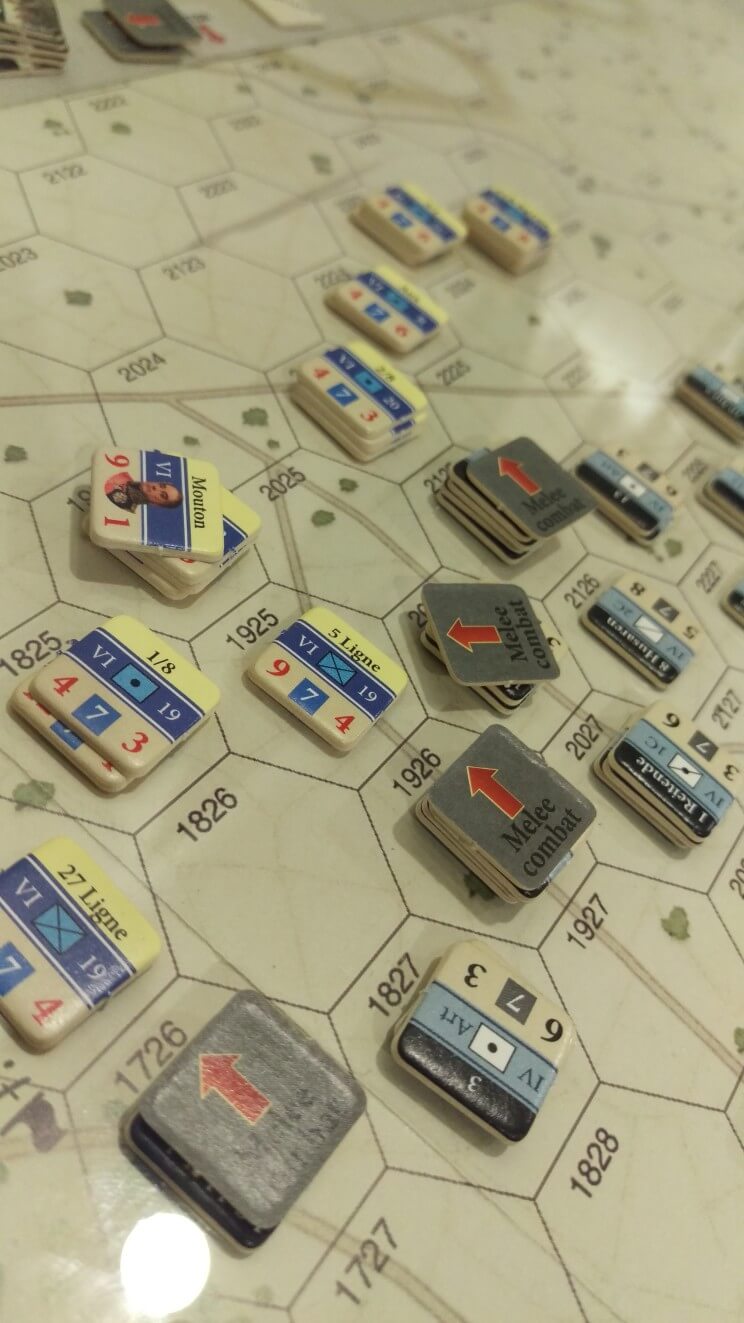
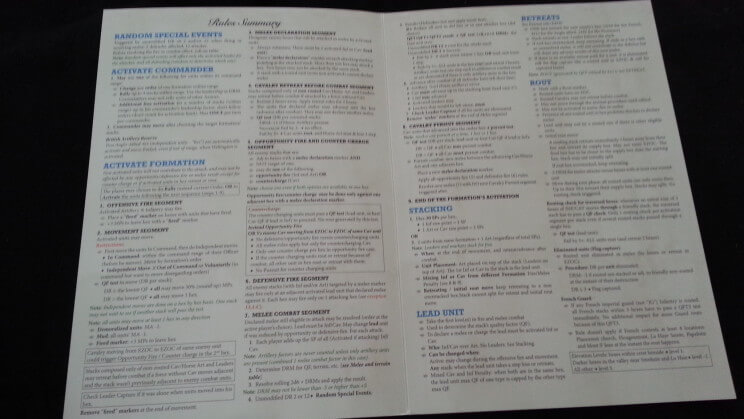
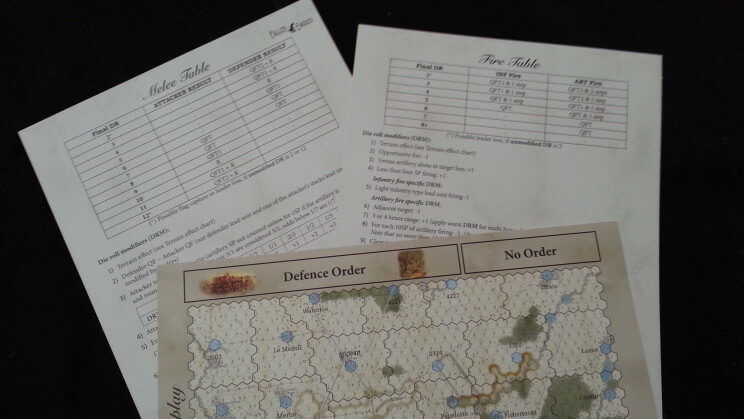
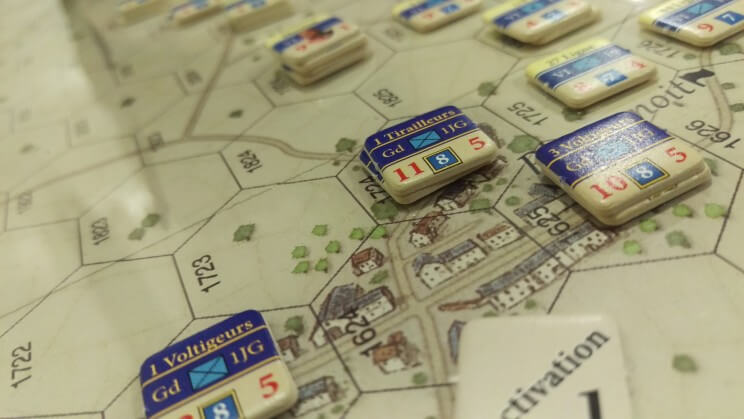
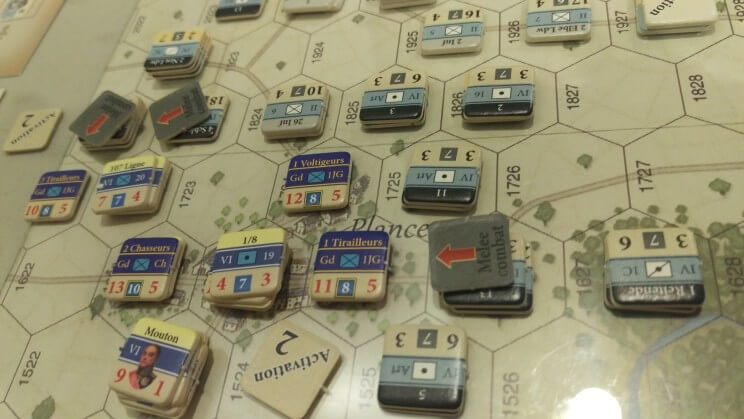
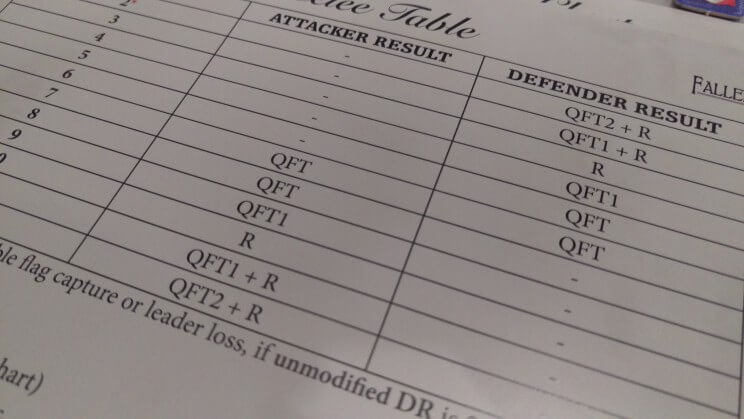
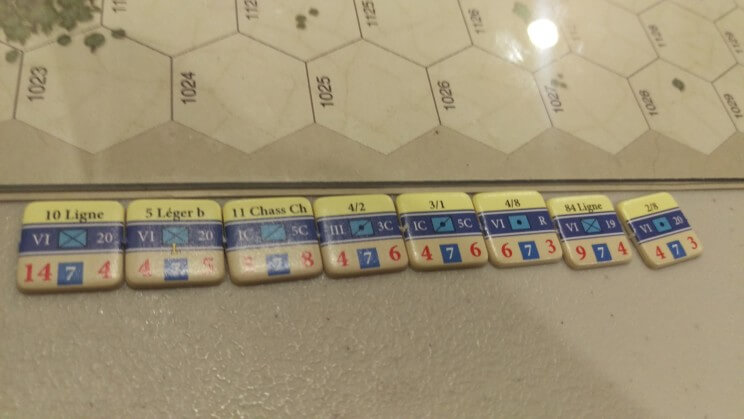
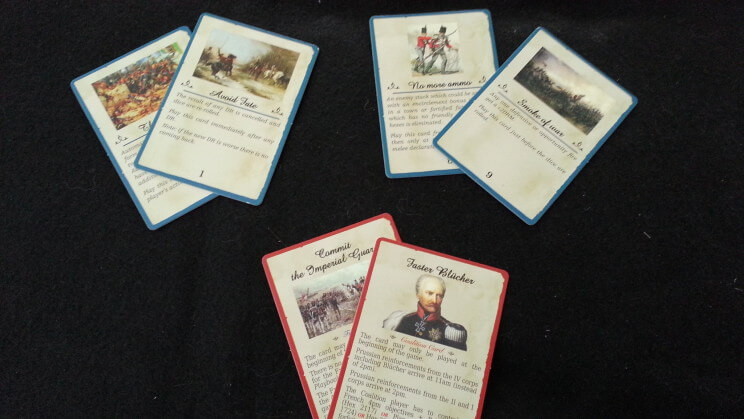
Kev, this is a terrific review. I must definitely trot out this game and play it–the things you say are the best parts of the game are the very things I’m looking for!
Thanks for reading Eric, I’m glad you enjoyed. -Best kevin
Well, I’m sold. I think this is just what I’m looking for at the tactical level. Thanks for the review Kev!
Hey Doug, thanks for the kind words. I hope it is enjoyable for you too. I’ll be playing the full game soon, I’ll update after that if we strike problems !